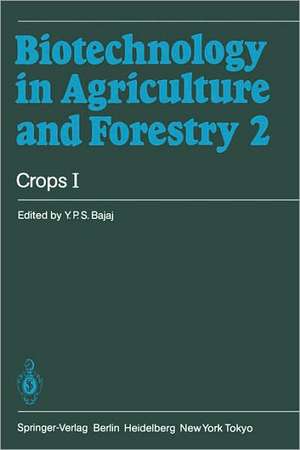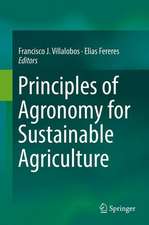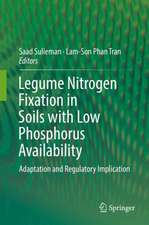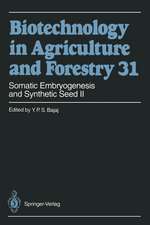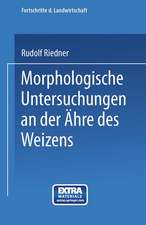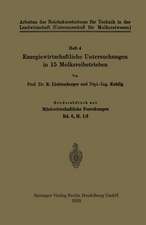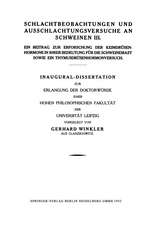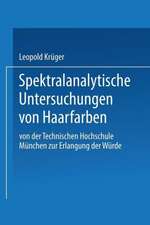Crops I: Biotechnology in Agriculture and Forestry, cartea 2
Autor Y. P. S. Bajajen Limba Engleză Hardback – apr 1986
| Toate formatele și edițiile | Preț | Express |
|---|---|---|
| Paperback (1) | 1800.61 lei 6-8 săpt. | |
| Springer Berlin, Heidelberg – 12 oct 2011 | 1800.61 lei 6-8 săpt. | |
| Hardback (1) | 1806.81 lei 6-8 săpt. | |
| Springer Berlin, Heidelberg – apr 1986 | 1806.81 lei 6-8 săpt. |
Din seria Biotechnology in Agriculture and Forestry
- 15%
 Preț: 644.56 lei
Preț: 644.56 lei - 18%
 Preț: 952.30 lei
Preț: 952.30 lei - 18%
 Preț: 1810.53 lei
Preț: 1810.53 lei - 18%
 Preț: 1811.93 lei
Preț: 1811.93 lei - 18%
 Preț: 1810.85 lei
Preț: 1810.85 lei - 18%
 Preț: 950.46 lei
Preț: 950.46 lei - 18%
 Preț: 942.56 lei
Preț: 942.56 lei - 18%
 Preț: 1801.41 lei
Preț: 1801.41 lei - 15%
 Preț: 647.16 lei
Preț: 647.16 lei - 18%
 Preț: 943.02 lei
Preț: 943.02 lei - 18%
 Preț: 1806.36 lei
Preț: 1806.36 lei - 18%
 Preț: 945.19 lei
Preț: 945.19 lei - 15%
 Preț: 641.01 lei
Preț: 641.01 lei - 15%
 Preț: 634.91 lei
Preț: 634.91 lei - 15%
 Preț: 638.14 lei
Preț: 638.14 lei - 18%
 Preț: 1800.14 lei
Preț: 1800.14 lei - 18%
 Preț: 1808.37 lei
Preț: 1808.37 lei - 18%
 Preț: 1798.11 lei
Preț: 1798.11 lei - 18%
 Preț: 1803.73 lei
Preț: 1803.73 lei - 15%
 Preț: 639.24 lei
Preț: 639.24 lei - 18%
 Preț: 1797.81 lei
Preț: 1797.81 lei - 15%
 Preț: 656.79 lei
Preț: 656.79 lei - 18%
 Preț: 1800.61 lei
Preț: 1800.61 lei - 15%
 Preț: 637.97 lei
Preț: 637.97 lei - 18%
 Preț: 1802.47 lei
Preț: 1802.47 lei - 18%
 Preț: 1800.76 lei
Preț: 1800.76 lei - 18%
 Preț: 1793.16 lei
Preț: 1793.16 lei - 18%
 Preț: 1798.43 lei
Preț: 1798.43 lei - 15%
 Preț: 633.95 lei
Preț: 633.95 lei - 18%
 Preț: 1797.67 lei
Preț: 1797.67 lei - 18%
 Preț: 1203.87 lei
Preț: 1203.87 lei
Preț: 1806.81 lei
Preț vechi: 2203.43 lei
-18% Nou
Puncte Express: 2710
Preț estimativ în valută:
345.78€ • 360.24$ • 287.50£
345.78€ • 360.24$ • 287.50£
Carte tipărită la comandă
Livrare economică 11-25 februarie 25
Preluare comenzi: 021 569.72.76
Specificații
ISBN-13: 9783540158424
ISBN-10: 3540158421
Pagini: 632
Ilustrații: XVIII, 608 p.
Dimensiuni: 178 x 254 x 39 mm
Greutate: 1.05 kg
Ediția:1st ed. 1986. 2nd printing 1986
Editura: Springer Berlin, Heidelberg
Colecția Springer
Seria Biotechnology in Agriculture and Forestry
Locul publicării:Berlin, Heidelberg, Germany
ISBN-10: 3540158421
Pagini: 632
Ilustrații: XVIII, 608 p.
Dimensiuni: 178 x 254 x 39 mm
Greutate: 1.05 kg
Ediția:1st ed. 1986. 2nd printing 1986
Editura: Springer Berlin, Heidelberg
Colecția Springer
Seria Biotechnology in Agriculture and Forestry
Locul publicării:Berlin, Heidelberg, Germany
Public țintă
ResearchCuprins
Section I Cereals.- I.1 Biotechnology of Wheat Improvement (With 7 Figures).- I.2 Wheat: Genetic Variability Through Anther Culture (With 2 Figures).- I.3 Wheat: Improvement Through Anther Culture (With 4 Figures).- I.4 Wheat: Production of Haploids, Performance of Doubled Haploids, and Yield Trials (With 3 Figures).- I.5 Durum Wheat (Triticum durum Desf.) (With 3 Figures).- I.6 Rice: Regeneration of Plants from Callus Cultures (With 14 Figures).- I.7 Rice (Oryza sativa L.): Factors Affecting Androgenesis (With 3 Figures).- I.8 Rice: Anther Culture for Rice Improvement in China (With 1 Figure).- I.9 Rice (Oryza sativa L.): Cryopreservation of Cell Cultures (With 14 Figures).- I.10 Corn (Zea mays L.): Production of Pure Lines Through Anther Culture (With 4 Figures).- I.11 Barley (Hordeum vulgare L.): Establishment of Cultures and the Regeneration of Plants (With 3 Figures).- I.12 Barley: Induction of Genetic Variability Through Callus Cultures (With 4 Figures).- I.13 Sorghum [Sorghum bicolor (L.) Moench] (With 2 Figures).- I.14 Pearl Millet (Pennisetum americanum L.) (With 3 Figures).- Section II Vegetables, Legumes and Tubers.- II.1 Soybean [Glycine max (L.) Merr.] (With 1 Figure).- II.2 Phaseolus: Wide Hybridization Through Embryo Culture (With 2 Figures).- II.3 Tomato (Lycopersicon esculentum L.) (With 1 Figure).- II.4 Pepper (Capsicum annuum L.) (With 3 Figures).- II.5 Egg Plant (Solanum melongena L.) (With 1 Figure).- II.6 Cucurbits (With 5 Figures).- II.7 Onion, Garlic and Leek (Allium Species) (With 10 Figures).- II.8 Celery (Apium graveolens L.) (With 2 Figures).- II.9 Butter-Bur (Petasites japonicus Miq.) (With 5 Figures).- II.10 Biotechnology of Potato Improvement (With 4 Figures).- II.11 Sweet Potato (Ipomoea batatas Poir.) (With 8 Figures).- II.12 Sugar Beet(Beta vulgaris L.) (With 2 Figures).- II.13 Globe Artichoke (Cynara scolymus L.) (With 2 Figures).- Section III Future Agricultural Crops.- III.1 Triticale (Triticosecale): Production Through Embryo Culture (With 2 Figures).- III.2 Triticale: Production of Haploid and Homozygous Plants (With 5 Figures).- III.3 Hordecale (Hordeum vulgare L. × Secale cereale L.) (With 2 Figures).- III.4 Winged Bean [Psophocarpus tetragonolobus (L.) DC.] (With 5 Figures).- III.5 Amaranths (Amaranthus spp.): Potential Grain and Vegetable Crops (With 3 Figures).- III.6 Buckwheat (Fagopyrum esculentum Moench.) (With 14 Figures).
